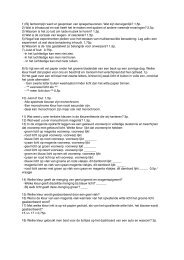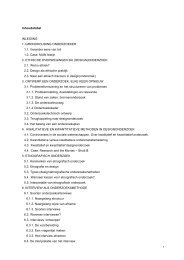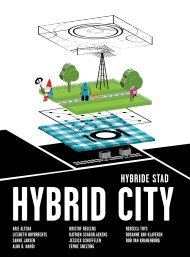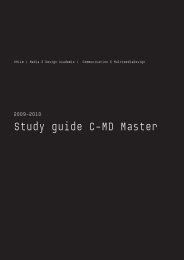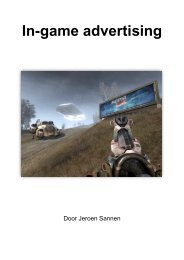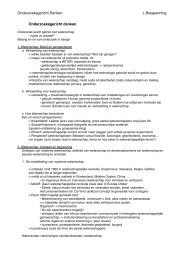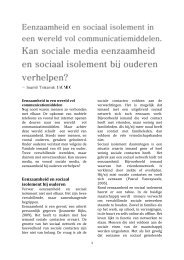Study guide C-MD Master - CMD-Stud - KHLim
Study guide C-MD Master - CMD-Stud - KHLim
Study guide C-MD Master - CMD-Stud - KHLim
You also want an ePaper? Increase the reach of your titles
YUMPU automatically turns print PDFs into web optimized ePapers that Google loves.
Introduction/learning objectives<br />
We see social media as a means by which the individual can<br />
identify himself and look for peers to start a conversation. Web 2.0<br />
giving him plenty of options to do so.<br />
In order to keep it interesting though, we think that the level of participation<br />
is important and whether or not this participation leads<br />
to a meaningful experience for the individual. Only when there is a<br />
high degree of participation we get the notice of “place” or “community”.<br />
In this module we will analyse, investigate and ‘debunk’ the socalled<br />
social media/Web2.0-tools & -ideology.<br />
For our project we use the design methodology “social interaction<br />
design”. http://www.gravity7.com/social_interaction_design.html<br />
“Social interaction design is the design of social media. It encompasses<br />
Web 2.0 design practices and tools as well as a kind of social<br />
practices-oriented approach to user experience and interaction<br />
design… Social interaction design anticipates what happens at the<br />
social level when a community of users engage with your site.”<br />
Educational concept<br />
The Open Space concept<br />
One of the key elements of social media is a certain kind of openness<br />
and equality between the majority of the group members. The<br />
Open Space concept starts from the idea that on most conferences,<br />
presentations, lectures,… the coffee break (and its mixture of<br />
on-topic and off-topic talks ) are more interesting, more vivid, more<br />
accurate, more valuable than the conference, presentation,… itself.<br />
Harrison Owen, the initiator of the Open Space Method , thought it<br />
might be a good idea to just skip the “offical” part and stick with all<br />
the advantages of the coffee break-talk…<br />
We will use the Open Space Method as a way of agenda setting.<br />
Project<br />
The past years we did a project for Open Garments (0809), CJP<br />
(0708), Indymedia (0607), Jim TV (0506).<br />
This year we will work for “De Vooruit” Gent.<br />
Literature<br />
Required reading :<br />
“Join the conversation” from J. Jaffe (Wiley)<br />
“Een nieuwe kijk op de experience economy – betekenisvolle<br />
betekenissen” Boswijk, Thijssen, Peelen ISBN 90-430-0928-8<br />
(2005)<br />
Other articles/texts used in this class can be found on Blackboard.<br />
Links to useful websites and blogs can be found on Blackboard.<br />
Recommended reading :<br />
“Van massamerk tot mensmerk” Van Lun ISBN 9075432445<br />
“Making meaning” How succesful businesses deliver meaningful<br />
customer experiences Diller, Shedroff en Rhea ISBN 0-321-37409-<br />
6<br />
Evaluation<br />
A cognitive test<br />
Group discussion and individual test.<br />
Research<br />
1. You will perform research for the project.<br />
2. You will do explorative research concerning a few<br />
topics chosen from the glossary in the field of social<br />
media<br />
Project<br />
There is only one examination period.<br />
Tolerance is however possible.<br />
15



